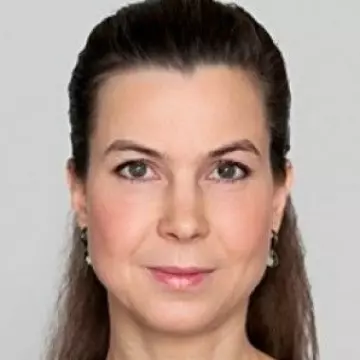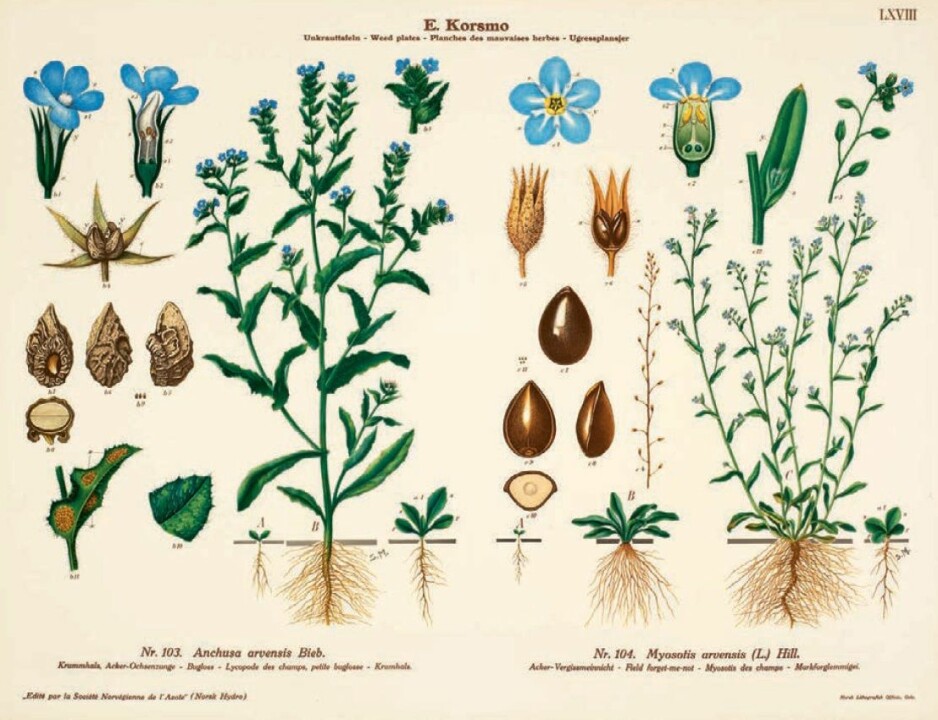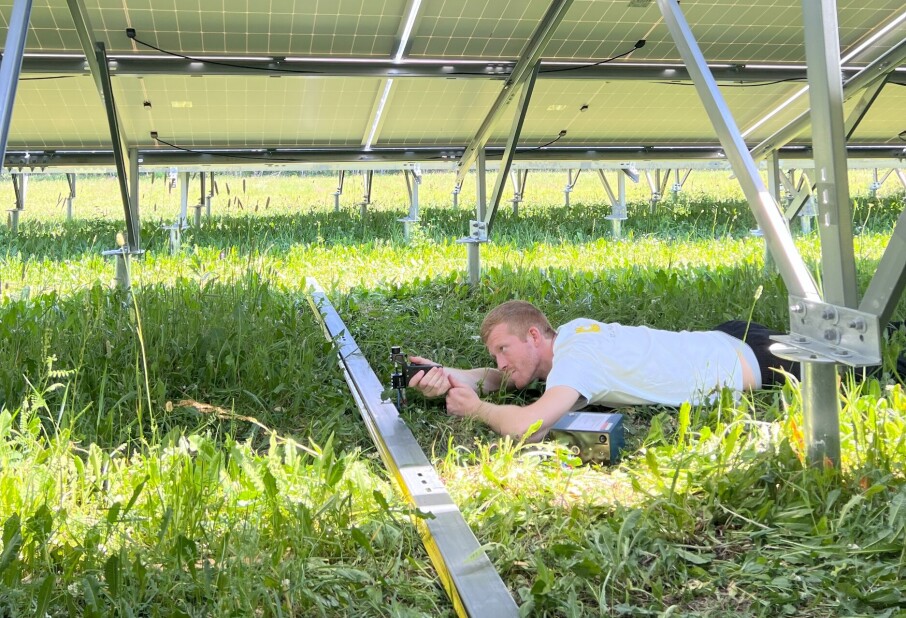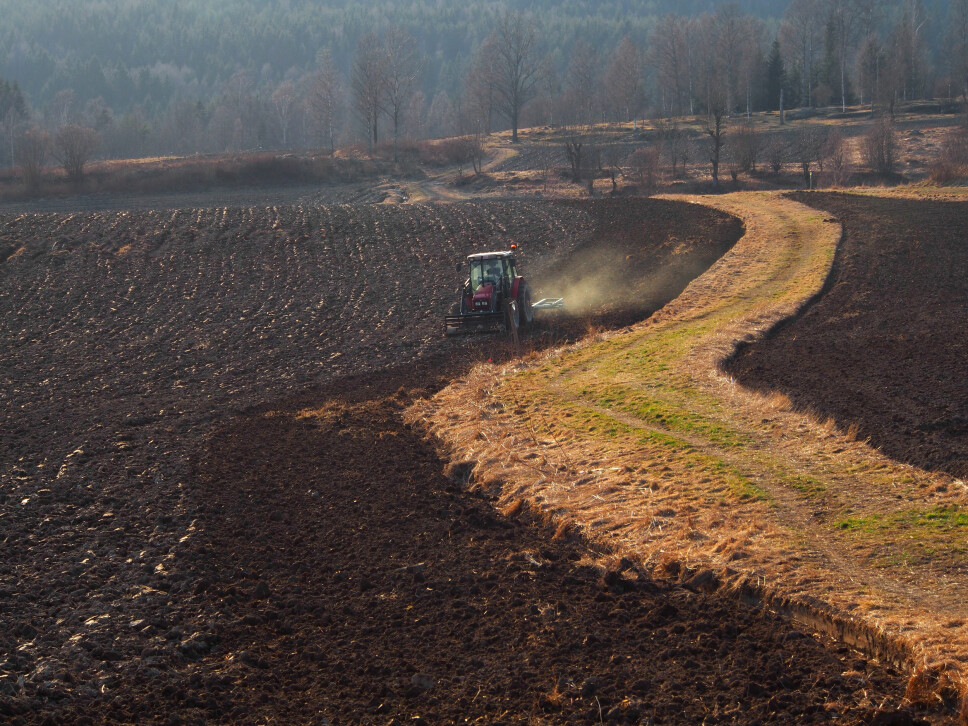
What is soil, anyway?
Did you know that the soil in fields is made up mostly of rock, while planting soil from the garden centre is almost pure moss?
Of course we all know what soil is.
A lot of us actually became acquainted with it before we could talk.
Soil is the dark, mucky mass you find in fields, under the forest floor, under the lawn and in flower boxes. The stuff that forms the basis of everything that grows.
But what does this soil really consist of? What makes soil soil?
Now that’s not quite as easy to answer. People don’t even all agree on what can be called soil.
Natural soil
“It depends on who you ask,” says Erik Joner, research professor at NIBIO, the Norwegian Institute of Bioeconomy Research. Soil research is what he does.
“Sure, you can call a bag of peat from the garden centre soil. But some people don’t think that has anything to do with soil at all,” he says.
We’ll come back to the garden centre soil later.
To simplify, we’ll start with something everyone can agree on.
Natural soil: what you find in the ground in natural forests and meadows.
What is it made of? And where does it come from?
Soil is mostly rock
Again, it depends on where you are. But most of the land in Norway is actually made of rock, says Joner.
Or rather, it’s made up of loose material, or sediment.
Sediment is a common term for sand, gravel and clay – larger and smaller pieces of bedrock that have eroded or broken loose by ice and water action. Throughout the ages, rivers and glaciers have carried the loosened chunks with them, and they have settled in thick layers on plains and valley bottoms.
The ground at Gardermoen outside Oslo, for example, consists of piles of sand that used to lie on the bottom of a glacial lake from the ice age, Joner says.
And the slopes along the Oslo Fjord are made up of layers of clay that originates from river mud on the sea floor, when the sea level was 200 metres higher than it is today.
Further up the valleys and in the Jæren district in Rogaland county, the ground often consists of moraine – accumulations of rock, sand and clay that the glaciers deposited.
But sand and clay aren’t soil, are they?
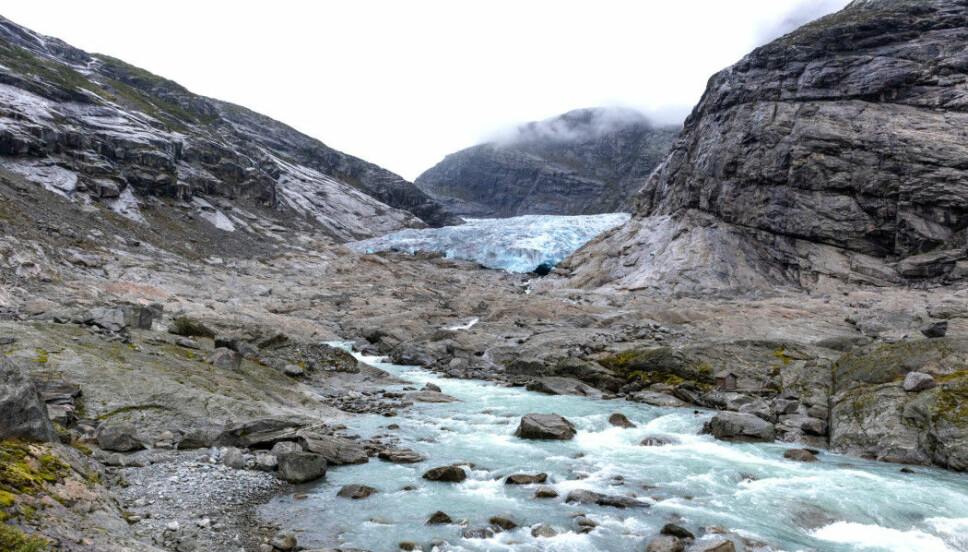
Weathered and transformed
“No, before sand and clay are affected by the weather, they aren’t soil. But after a few thousand years, they weather and change character,” Joner says.
Slowly but surely, the sediments on the surface become something else. Years of freezing and thawing, wind and water, sun and drought, break the rock granules down into smaller pieces.
The remains of plants and other living creatures fall onto the surface.
“They decompose, and in the process acids are formed that weather the minerals so that they are altered and affected by air. The iron in the rock rusts and turns red.
Over time, these processes turn the sediment into what we know as soil. But the process takes a long time. And that means that soil is old by definition.
10 000 years and still young
It has taken over 10 000 years to create the soil that exists in Norway today, Joner says. The process started when the ice ages ended.
But Norwegian soil is young.
“In the countries of southern Europe that weren’t covered by ice, the soil is much older,” he says.
You can actually see that the soil is old. Norwegian soil is a grey colour, whereas the typical Mediterranean soil is red because almost all the iron has rusted.
“That makes a big difference in terms of nutrient availability for the plants,” Joner says.
For example, the nutrient phosphorus is strongly bound in soil with a lot of rusted iron. This means that the plants have a hard time accessing the phosphorus. If you want plants to grow well in Mediterranean soil, you need to fertilize it more than Norwegian soil.
On the other hand, the Norwegian soil layers are thinner. The soil-forming processes simply have not had time to build up as thick soil layers as further south.
Earthworms and farmers
A lot of the Norwegian soil is rock, with a small amount of organic material from decayed plants. In most places the soil is stratified. In the coniferous forests, you typically find a thin top layer of decaying plant litter, and the layer of sand and minerals begins only a few centimetres below the surface.
The deciduous forests are different. Here, the mineral soils contain more organic material and the layers are more mixed. The reason for this is that this soil supports earthworms.
“Worms pull old leaves down into the soil with them. They shred and mix the organic matter with minerals farther down,” says Joner.
Another place where the layers are mixed is obviously agricultural land. People have been ploughing their fields for hundreds of years, so the dead plant material and minerals are well mixed.
But this soil still contains mostly weathered rock. Only about five per cent comes from organic matter.
This means that the farmer's soil differs significantly from the soil in the planters of the hobby farmer.
So how much rock is in the bags we buy at the garden centre?
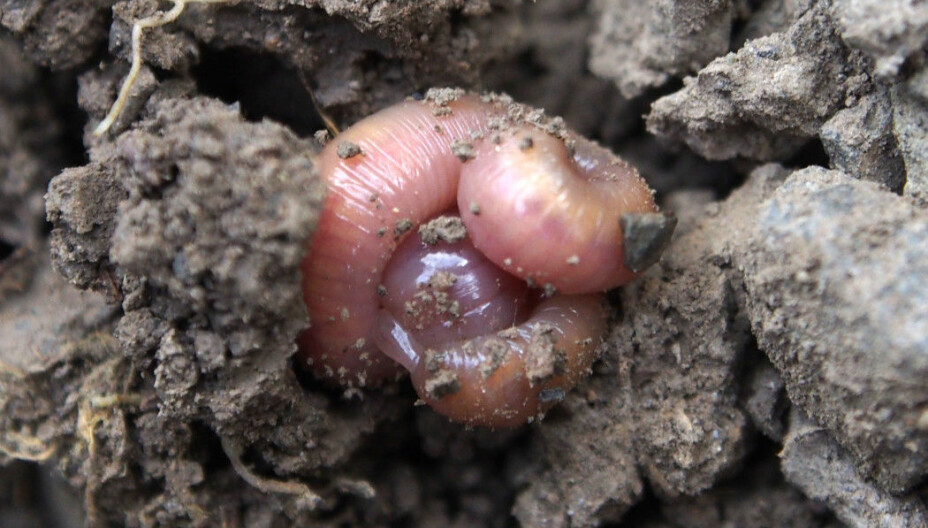
Almost pure peat
Almost none, according to the ingredient list on the back of a bag of ordinary plant soil for the garden: this soil consists of 90 per cent peat.
Peat is simply old sphagnum moss from bogs.
Almost nothing rots in wetlands. When moss dies, it just stays there, while new layers of moss grow on top of it. The old layers get compressed and form peat. Peat can grow metres deep in old bogs.
These peat layers get dug up on a large scale, including for use as plant soil. The practice is highly debated because peat farming has a negative effect on the environment. But it has been difficult to find good substitutes for peat.
Peat is cheap and easy to handle. It is porous and airy, while retaining water well. Plant roots like that.
But peat is also nutrient-poor. It contains none of the substances that plants need to grow. Therefore, the garden centre adds a small amount of fertilizer, such as composted cow and chicken manure, plus some lime to make the peat less acidic.
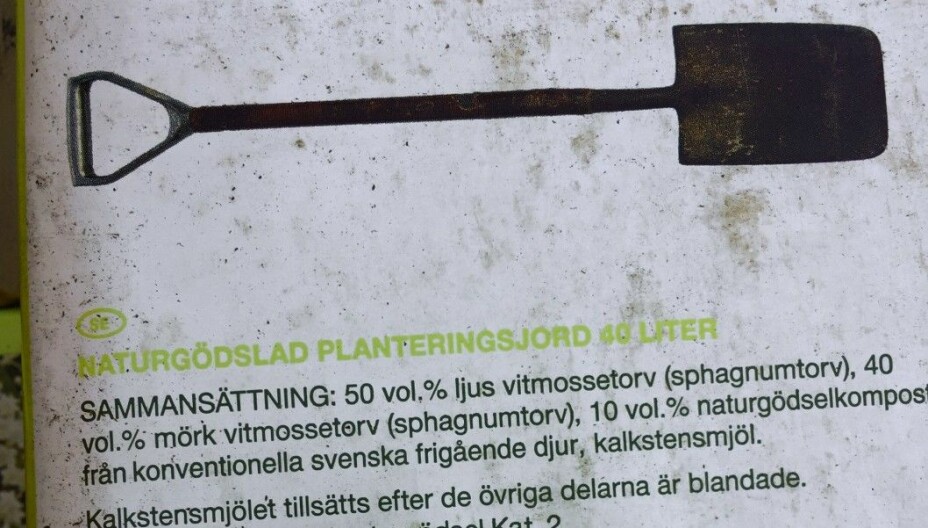
Peat gets used up
So – soil and soil can be very different things. Both mineral soil and peat soil need to be fertilized for plants to grow well. But unlike the mineral soil in the fields, the peat soil in flower boxes actually gets used up, says Joner.
“A colleague of mine has had a potted plant for over ten years. Now all you see is the entire root system, but not an ounce of soil! Everything has been broken down and used up,” he says.
Hobby gardeners thus need to not only fertilize, but also replenish the soil in their planters and flower pots.
This will mean a trip to the garden centre for several bags of peat. But by all means don’t get the idea that the old planting soil is useless and has to be replaced completely.
Cleanout hysteria
“You just have to add more nutrients, like compost, animal manure or mineral fertilizer,” says Joner.
And you don't have to remove twigs and grass or old roots at all.
“People sort of get into a cleanout hysteria – we think the soil has to be black and homogenous. That’s an illusion,” he says.
Joner advises tearing up the roots and mixing the old soil with compost instead.
Roots and other plant material contain lots of nutrients. When they decompose, the substances become available for new plants, the researcher explains.
And with that, we come to the final important ingredient in soil:
Microorganisms.
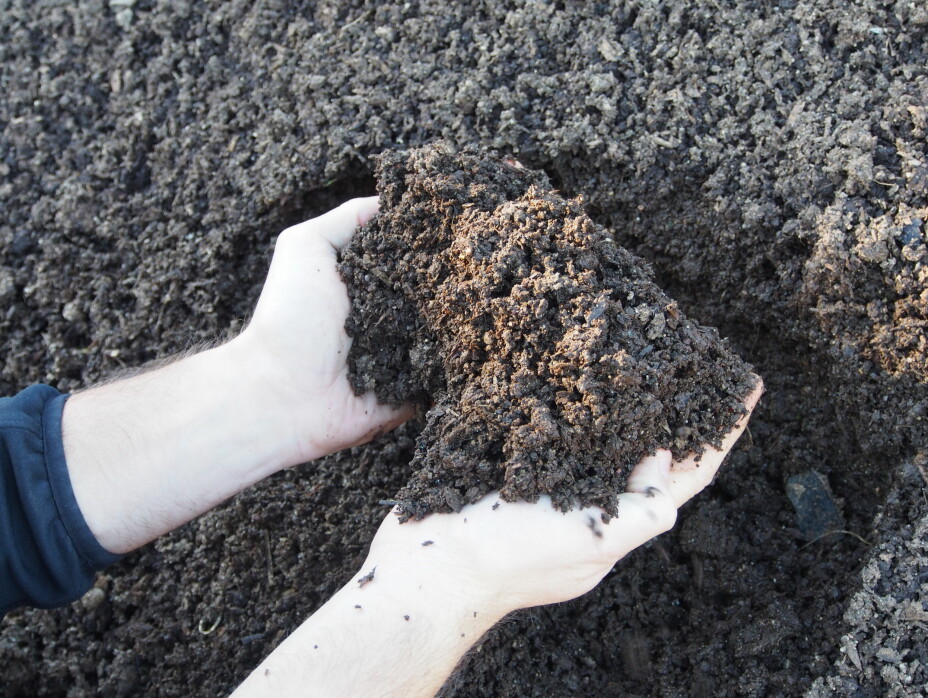
Millions of helpers
“A teaspoon of soil contains hundreds of millions of bacteria, spread out across 10 000 species,” says Joner.
Most of them live by breaking down the animal remains and plant litter, like the old roots in the patio planter, or the nutrients in the animal compost you just added.
In fact, these bacteria are what make the nutrients in organic material available in a form that the plants can absorb.
Lots of bacteria also live on nutrients that leak from the roots of plants. In return, they help the plant obtain substances it needs from the soil.
These bacteria will also establish themselves in your patio planter, all by themselves, and will help you keep the patio lush and beautiful.
But a planter doesn’t necessarily contain all the organisms that a plant would cooperate with in nature.
Fungal friends
Almost all shrubs, trees and other perennial plants in the wild are allied with special types of fungi, Joner says.
A network of fungal threads grows on the roots of the plant. In a way, they become the roots of the roots, which extend in search of nutrients that the plant needs.

In nature, the right fungus will eventually find its partner plants. But it may not make it to the planter.
“These fungi don’t come in the planting soil from the garden centre. And fungi have large spores that don’t travel by air,” Joner says.
For your balcony shrubs and perennials to have fungal partners, you’ll have to transport them yourself.
Acidic mushrooms from the forest
“The great thing is that the fungi are everywhere. All you need to do is bring a handful of soil from your garden and put it in the planter.
Or fetch a fistful of soil from the wild blueberry patch for your garden blueberries or the rhododendron bush. In the wild, these heather plants often grow in areas that are very different from our gardens. The fungi that they normally cooperate with may not exist in a regular garden.
Nor will these fungi necessarily thrive in garden soil, even if you bring them in yourself, Joner warns.
The natural soil in a wild blueberry forest is acidic, whereas garden centre soil usually has lime added to make it almost pH neutral. Once again, soil and soil aren’t always the same.
And so we’re just about back to where we started. If you ask what soil is, the answers will probably vary according to who you ask and where you are.
So maybe the first definition from childhood is still the most straightforward. That is, soil is the dark, messy mass found in fields, under the forest, under the lawn and in window boxes. The stuff that everything grows in.
Translated by Ingrid P. Nuse







